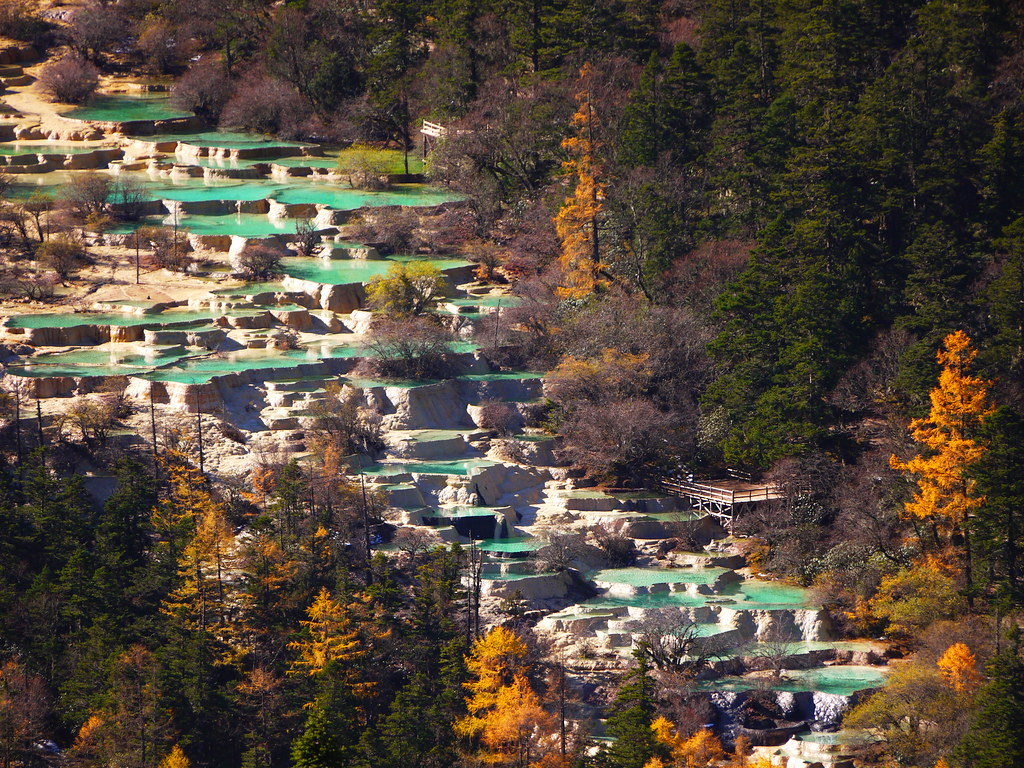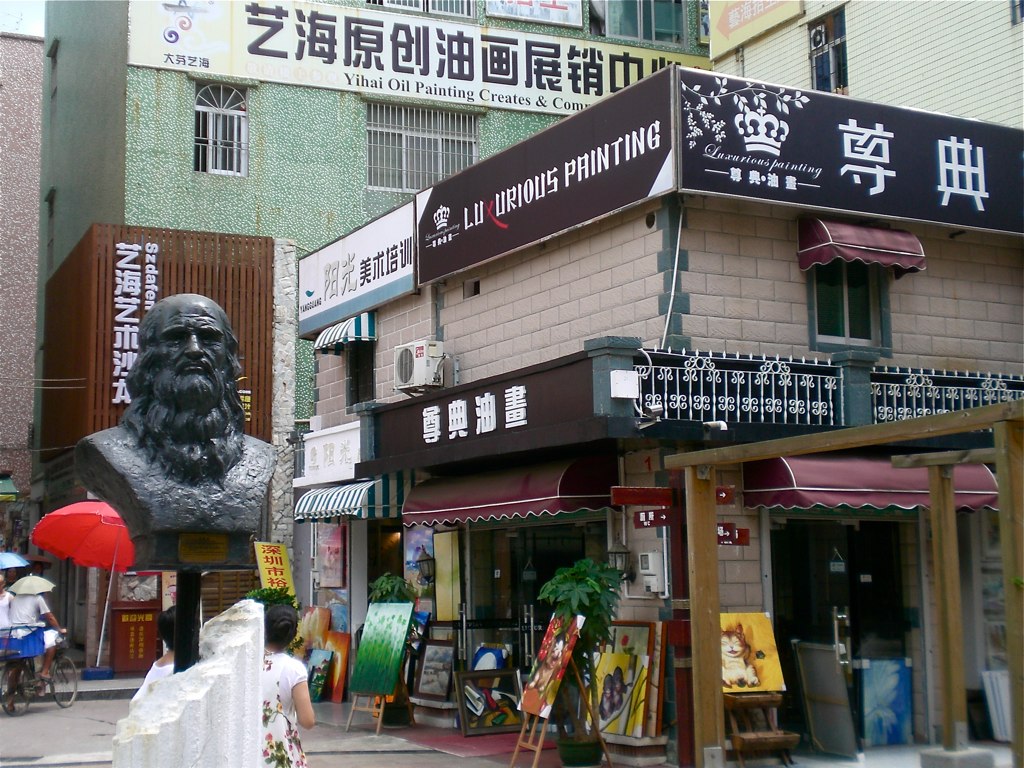7 July 2020
10 Amazing Places to Visit in China that Aren’t the Great Wall or The Terracotta Army
If you are visiting China as a tourist then the likelihood is that at some point during your stay you will find yourself at the Great Wall. This remains one of the country’s sites that simply should not be missed, especially when you travel to places along its length that are less visited by tourists (take our tour). Yet in this vast country there are hundreds of other places that could crown a visit for one reason or another. As with college paper writing service reviews, you need to find out a little about your destination before you venture there. They may be less well known than the Great Wall or indeed the Terracotta Army but they linger in the minds and hearts of all who visit them. Here are just ten of those amazing places you could visit while in China.
1 Huanglong – Land of the Yellow Dragon
The Minshan Mountain Range is situated in the north of China’s Sichuan Province. An area of outstanding natural beauty it is home to a four kilometer stretch of travertine landforms and pools. Even in its home country the place is relatively little-known. Yet Huanglong, literally Yellow Dragon, is a place of wonders. You cannot get a better recommendation than that - and when it comes to it, essay writing reviews will also let you know who you can trust, what will be wonderful or not.
Over the millennia the springs around this small crease in the mountains have deposited limestone which has built up to create a series of pools – over 3,000 of them - which extend to almost four kilometers in length. The chain of pools are said to resemble a huge golden dragon, which gives the place its name. A good essay service writing, too, might resemble a wise old dragon - reliable, trustworthy and full of good knowledge!
Read more about Huanglong
2 Dafen
You may have noticed that hotels have the same oil painting in each room. Or that you can get a replica Starry Night or Mona Lisa for roughly the price of a high-end Kindle. If you think that the oil painting reproduction game is a cottage industry, you're almost correct: it's a village industry.

In this case, it's the village of Dafen, China. Founded in the mid-1990s by a businessman and about twenty artists, Dafen is now home to 5,000 artists -- who, collectively, churn out over 5 million paintings a year. That's more than half of the oil paintings produced in the entire world each year.
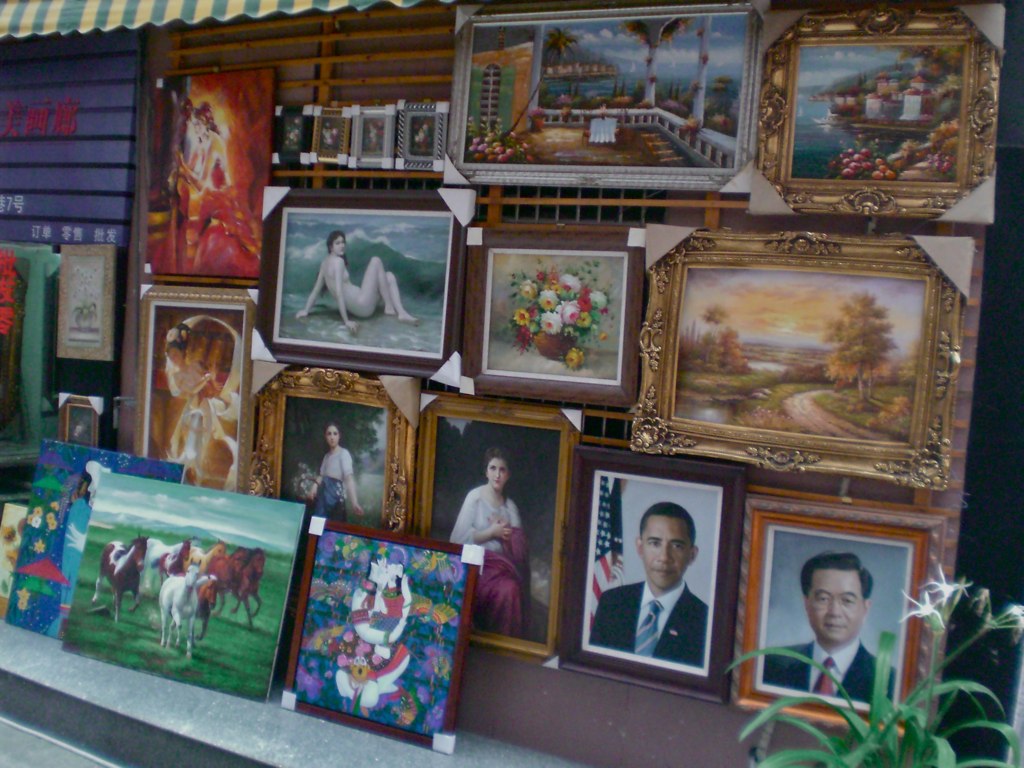
Read More about Dafen
3 The Longsheng Rice Terraces

Village elders have a saying in Longsheng: where there is soil there is a terrace. Two hours ride from the city of Guilin in Guanxi province the problem of growing rice on steep hills was long ago solved. From the Yuan Dynasty at the end of the thirteenth century the colossal task of terracing the Longsheng hills to provide a rice harvest began.
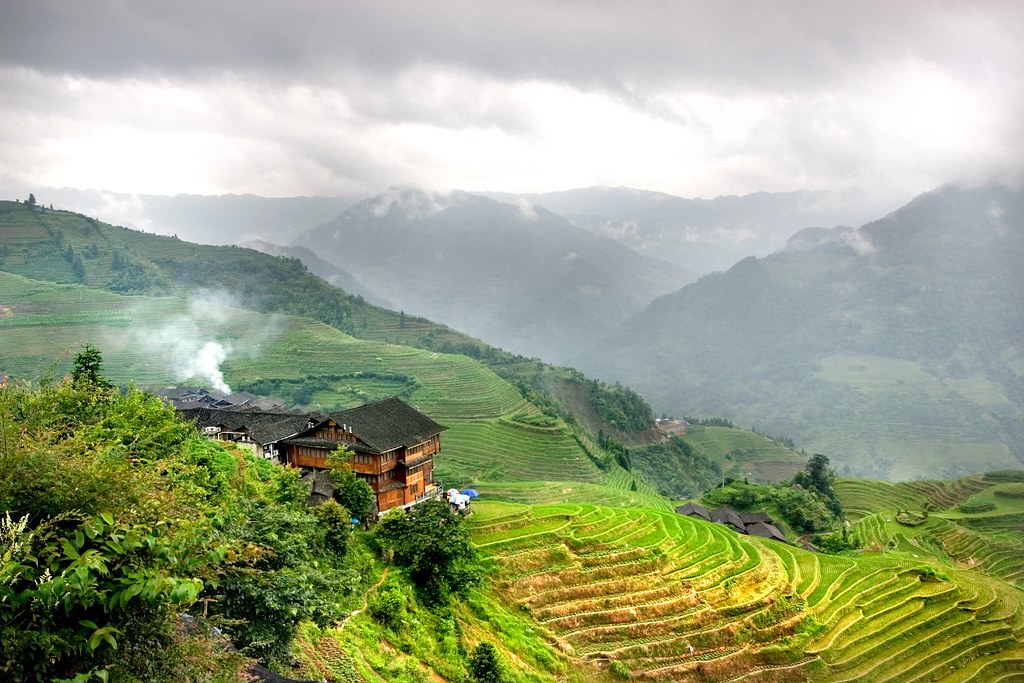
It took four hundred years for the terraces, also known as Longjii, to be built. During that time countless generations toiled on the terraces to ensure the annual rice harvest which did little more than feed their families. Yet in their efforts to provide for their families they produced a scene of tremendous beauty. It is little wonder that the Chinese call it the ‘amazing terrace’.
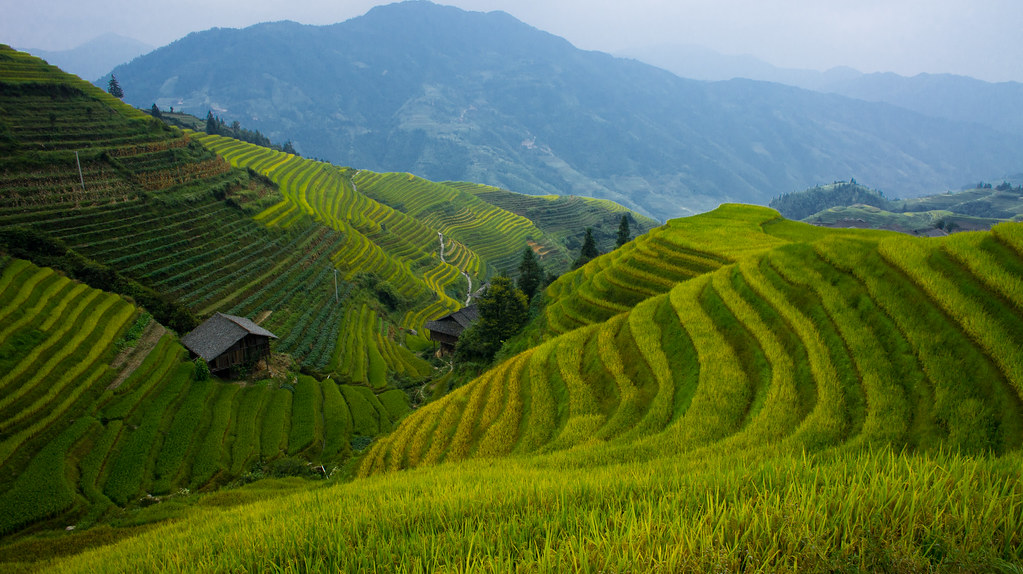
Read More about the Longsheng Rice Terraces
4 The Young Mao of Changsha

As a young man Mao Zedong who would later become universally known as Chairman Mao found himself converted to communism in the city of Changsha in south central China. When a memorial to the founding father of the People’s Republic was decided upon, the people of Changsha decided to go against the norm. Instead of the mature leader most of the monuments of Mao depict, they decided that they would remember Mao as the young man who discovered his destiny in their city.

The granite statue stands over 100 feet tall and captures the Great Helmsman in rather more poetic terms than usual. It stands on Juzi Island in the middle of Xiang River where Mao wrote an elegant and expansive poem praising the city. The city has now returned the compliment in some style.
Read more about the Young Mao of Changsha
5 The Tulous of Fujian Province
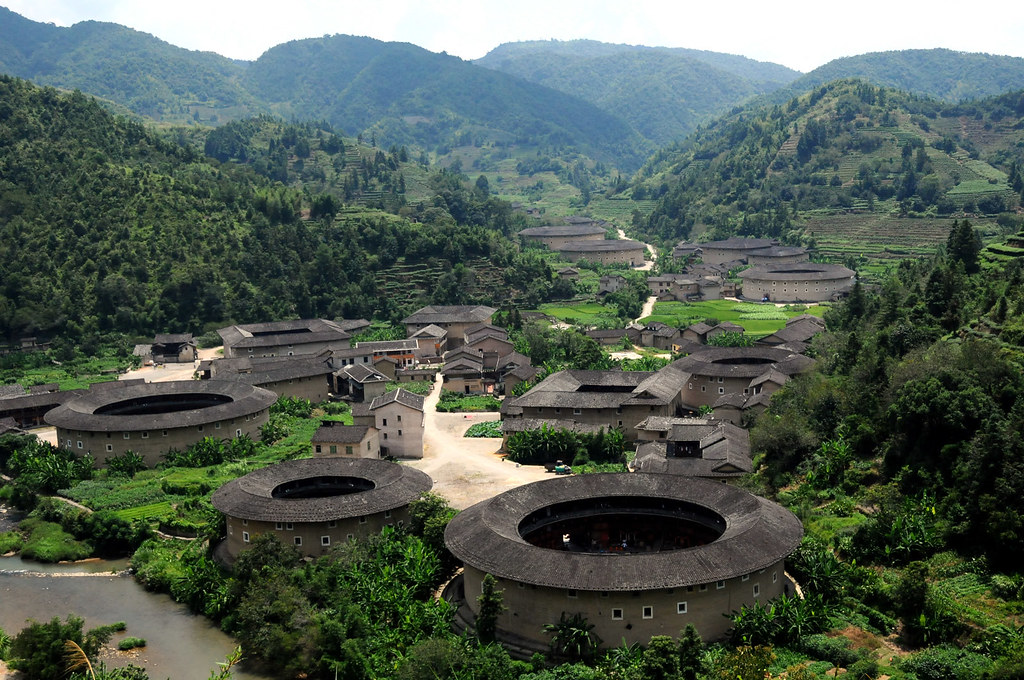
Around the 12th Century the people of the Fujian Province in China decided that their homes did not offer them sufficient protection in times of civil strife and from the armed bandit gangs which plagued the area for hundreds of years.
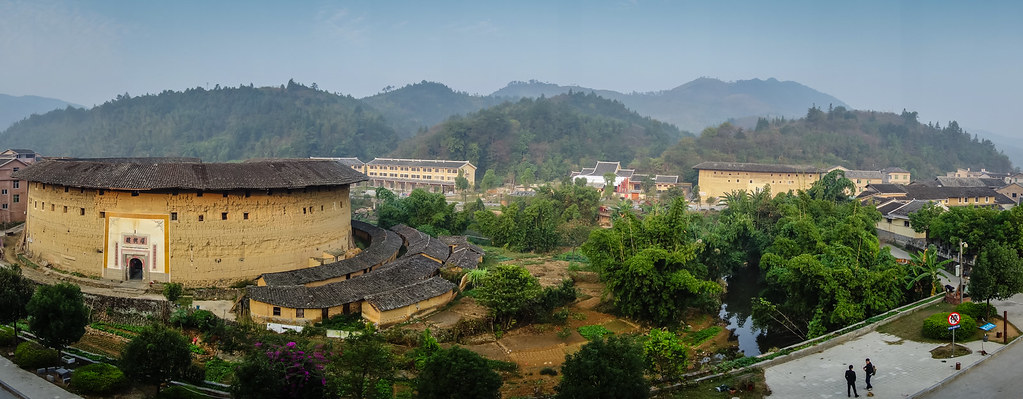
Groups of families combined their incomes to provide their community with something more substantial – a tulou - that could safeguard their property and their lives in this mountainous area on the southeast coast of China.
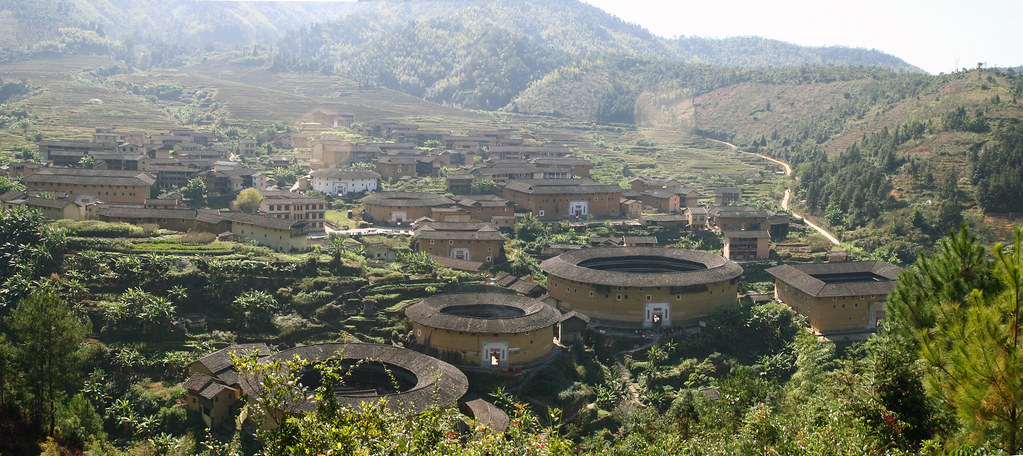
Like any good idea, the idea of large, enclosed fortified buildings had already been around for centuries. Yet advances in technology enabled communities to create a safe space, encircled by thick load bearing walls and up to five floors high.
Read more about the Tulous of Fujian Province
6 Elephant Trunk Hill – Guilin’s Legendary Protector
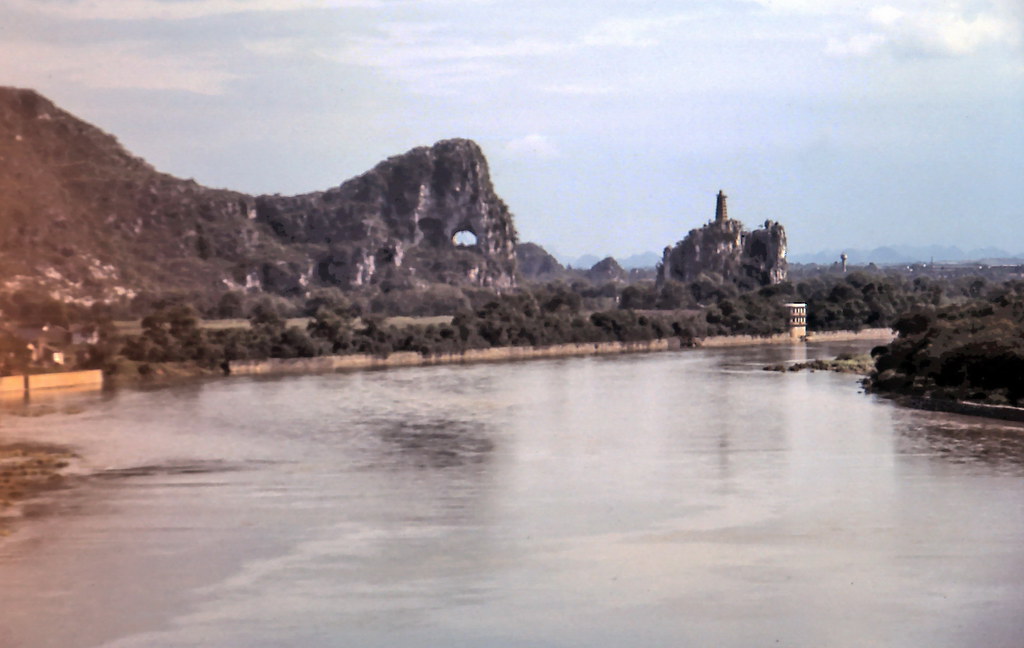
Tramping through the hills around Guilin in China is busy work, so at the end of the day an elephant gets thirsty. There’s nothing like dipping your trunk in to the river to cool off and taking a long, thirst quenching drink. Yet when you’re made of stone you might be there for quite a long time.

For hundreds of years the people of Guilin in the Guangxi Zhuang province of southern China have imagined this hill on the outskirts of their city to be a giant pachyderm. So, don’t reach for your spectacles – this elephant really is made of stone. This particular elephant stands where two rivers meet, the Li River and the Peach Blossom River. For fifteen hundred years it has been a symbol of good luck for the town.
Read more about Elephant Trunk Hill
7 Crescent Lake
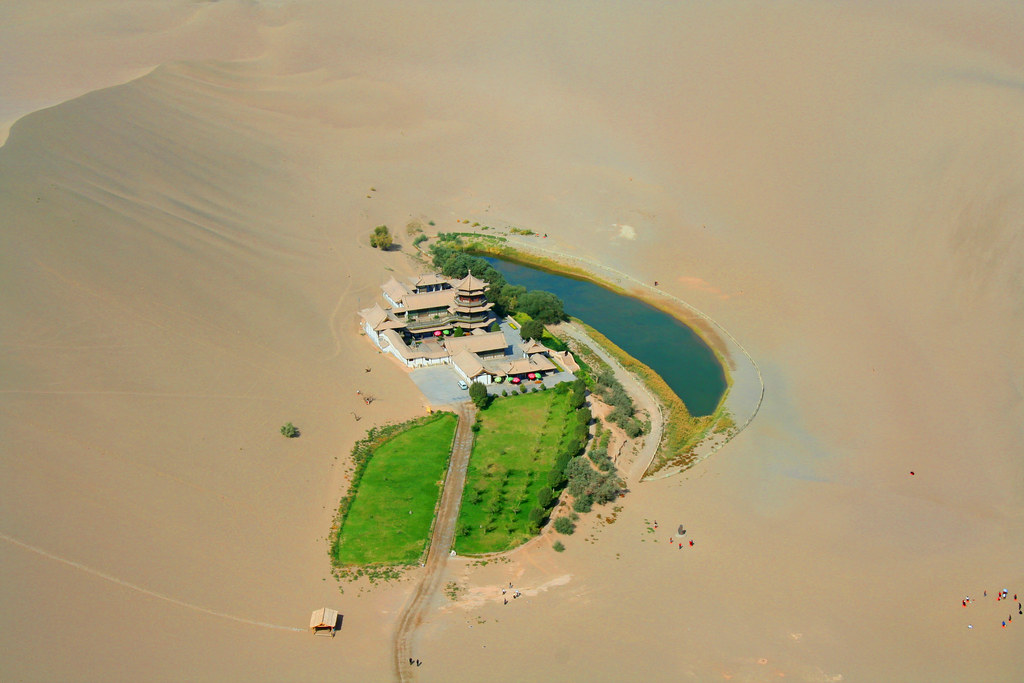
For thousands of years pilgrims and traders on the Silk Road to the West have used the Crescent Lake oasis as a last stop off before they face the hardships of the Gobi Desert. Six kilometers from the city of Dunhuang the oasis has persevered throughout the millennia. However, it may now be reaching its Waterloo.
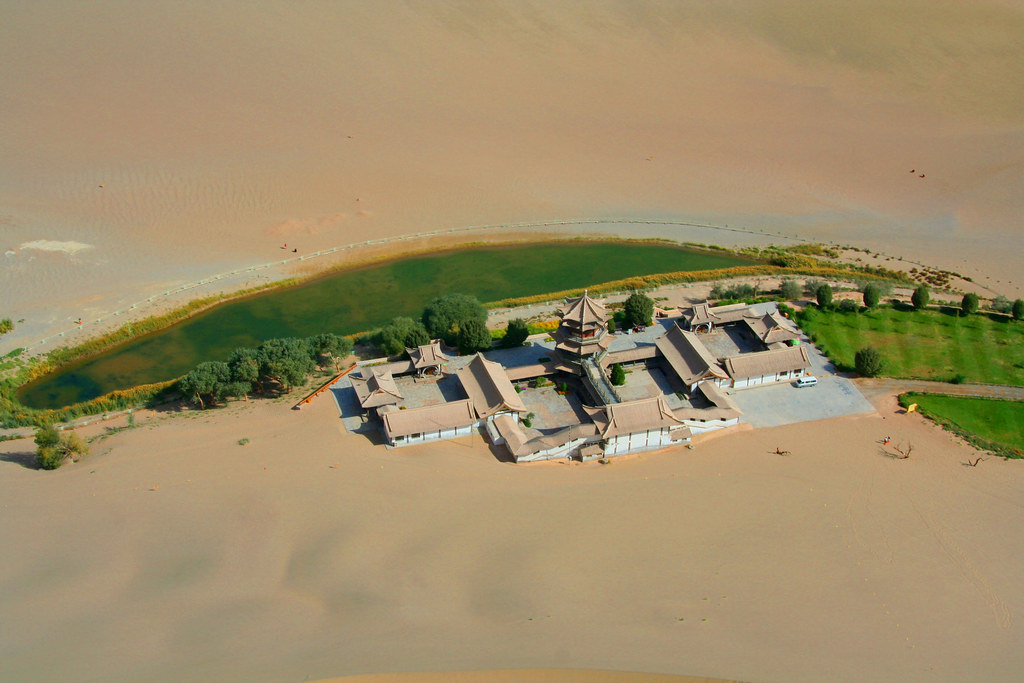
As well as an exit to the West, Dunhuang was for more than two thousand years a crucial entrance in to China. Travelers followed a string of oases, skirting around the unforgiving sands of the Gobi and Taklamakan Desert. In this fashion they would also avoid the ghosts and demons that were said to haunt the desert. It was said that the desert was so desolate and devoid of life that the bones of those who had died in it were used as signposts.
Read More about the Crescent Lake
8 The Maijishan Grottoes
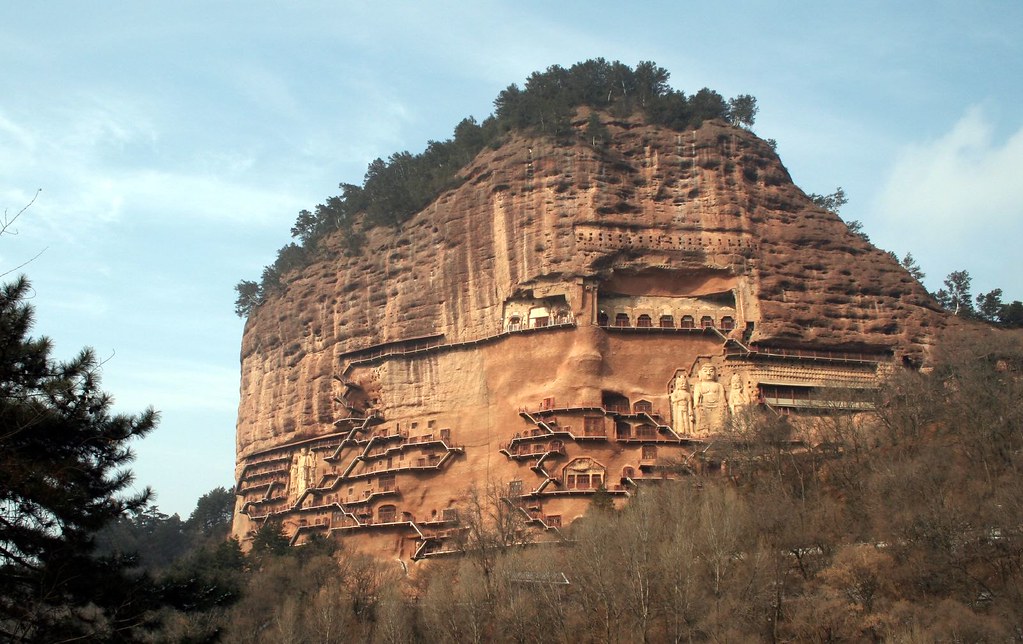
China has four major Buddhist cave complexes - by far the most visited being the Longmen caves. Less well known are the Maijishan Grottoes. Situated in Gansu Province in the northwest of China, this astonishing example of cave architecture hewn from rock consists of over 7,000 Buddhist sculptures not to mention almost 1000 square meters of murals.
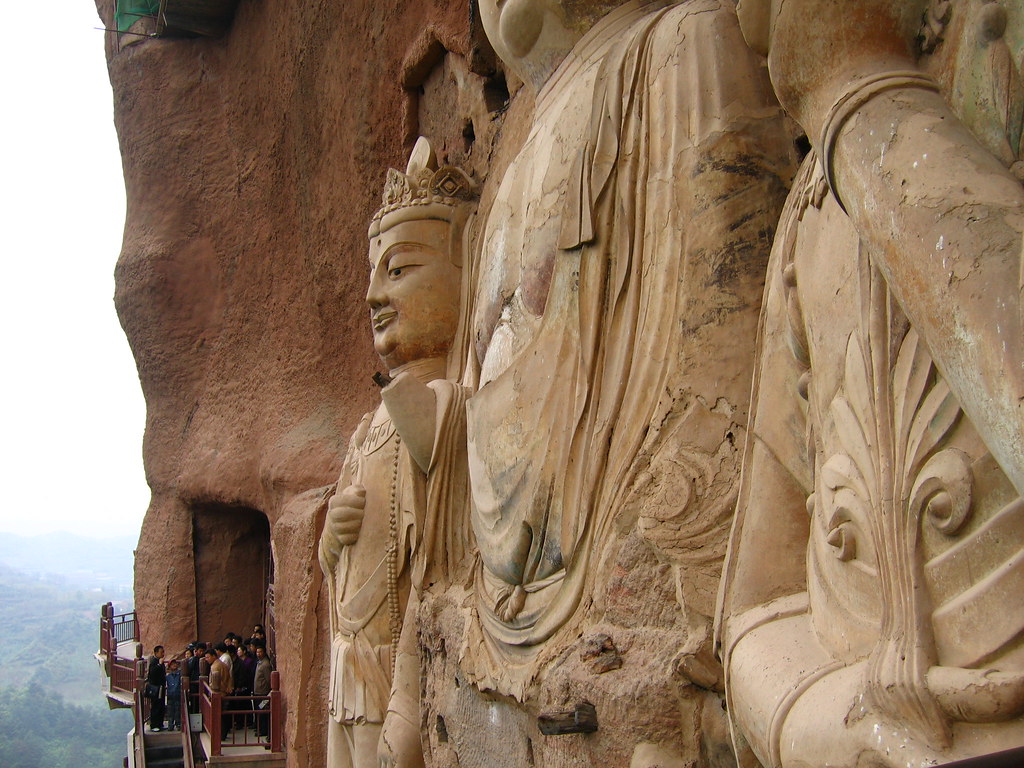
The name derives from that of the hill upon which the grottoes are built. It means wheat stack mountain and it rises 142 meters above the otherwise flat but lush landscape. It is believed that the history of the grottoes goes back to around 400AD when Buddhism reached China from India. There the traditions of cave shrines (see our fascinating article on Ajanta) extended in to the Chinese heartlands over the Silk Road.
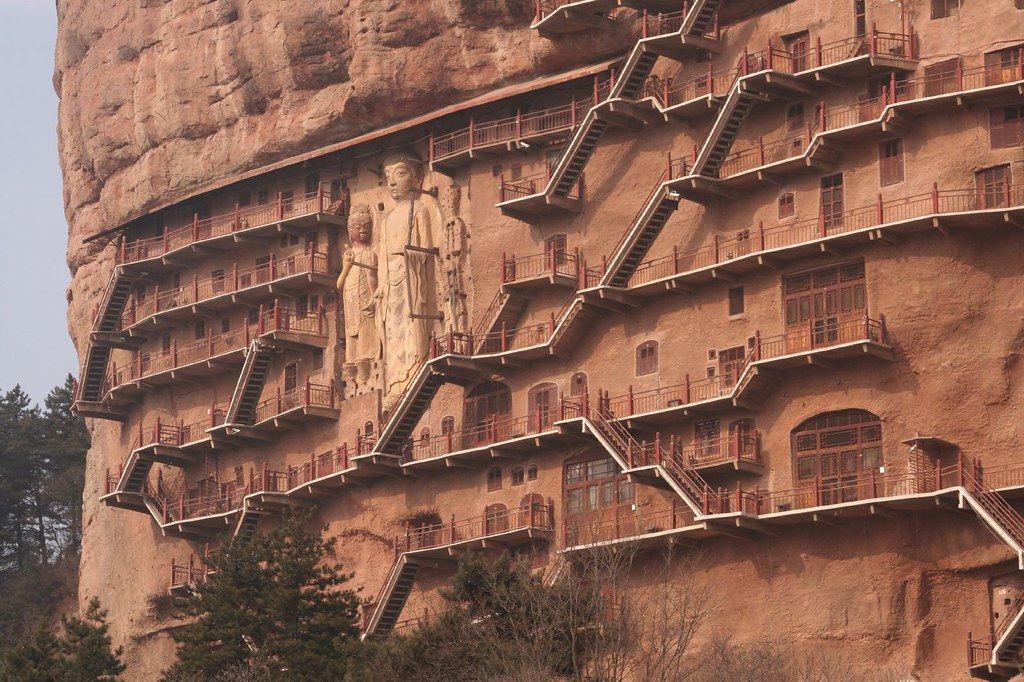
Read more about the Maijishan Grottoes
9 The Avenue Toward Heaven – China’s Scariest Road
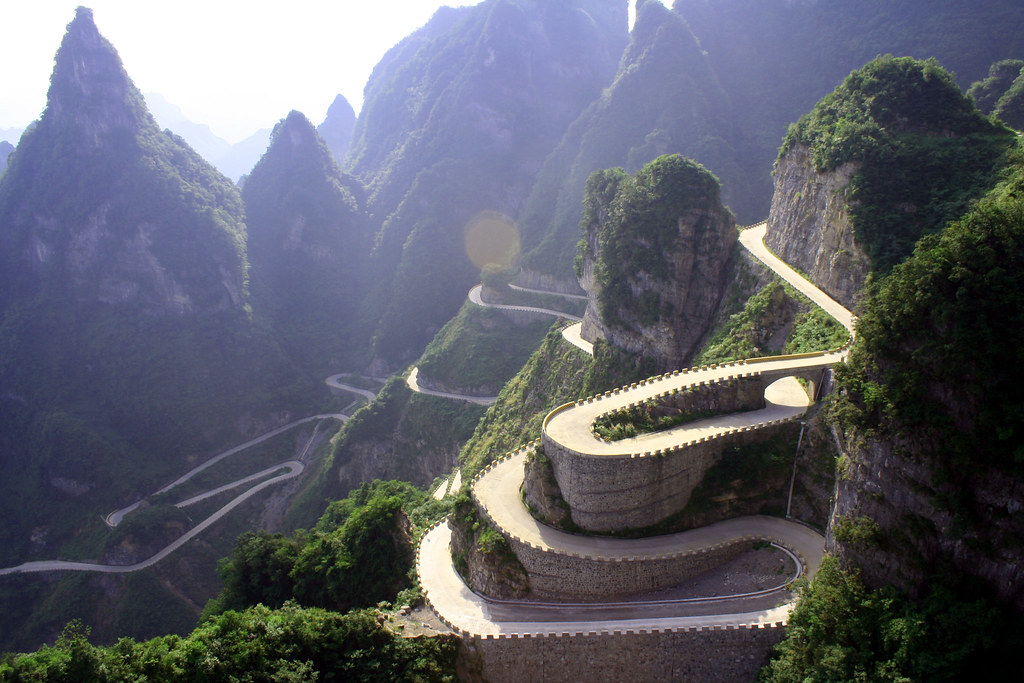
There are some roads in this world which just look scary. If there was a list of such roads then the Avenue Towards Heaven (also known as the Big Gate Road) in Tianmenshan, in the Hunan province of China might well be very near the top. It goes from a staggering 200 meters below to 1300 meters above sea level.
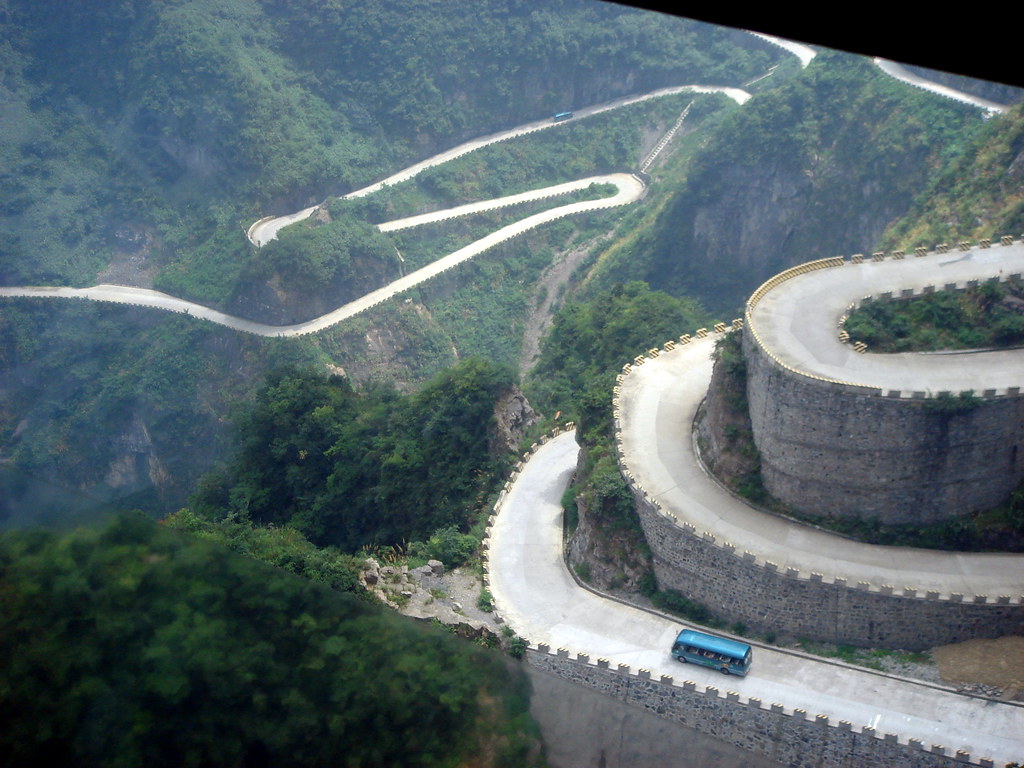
It is little wonder then that the road which was started in 1998 took eight years to complete. Its twists and turns are certainly not for the faint hearted. The road climbs Tianmen Mountain just south of Zhangjiajie City (which was previously called Dayong) is very much the must see scenic area in Hunan.
Read more about the Avenue Toward Heaven
10 The Fortified Towers of Kaiping
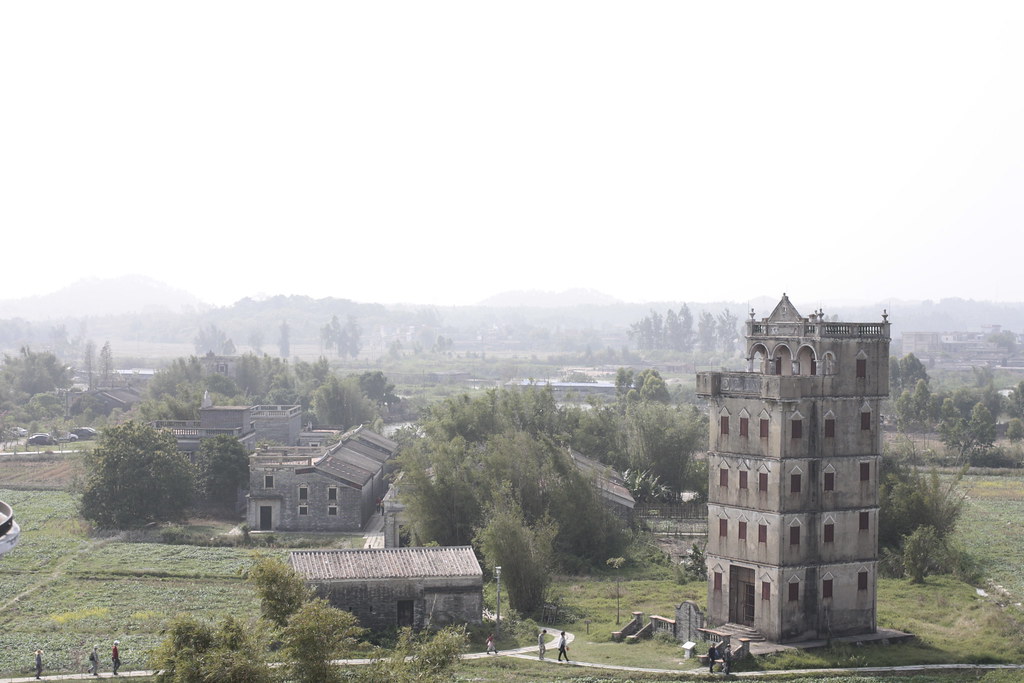
The rambling villages of Kaiping are generally unremarkable until you come across a diaolou. Rising up from the small villages like the proverbial sore thumbs, these century old fortified towers are a reminder of a significantly more dangerous times for the villagers.

This county in the province of Guangdong has a history of banditry as well as more recent political turmoil These towers that dot the landscpape are now protected by the government.
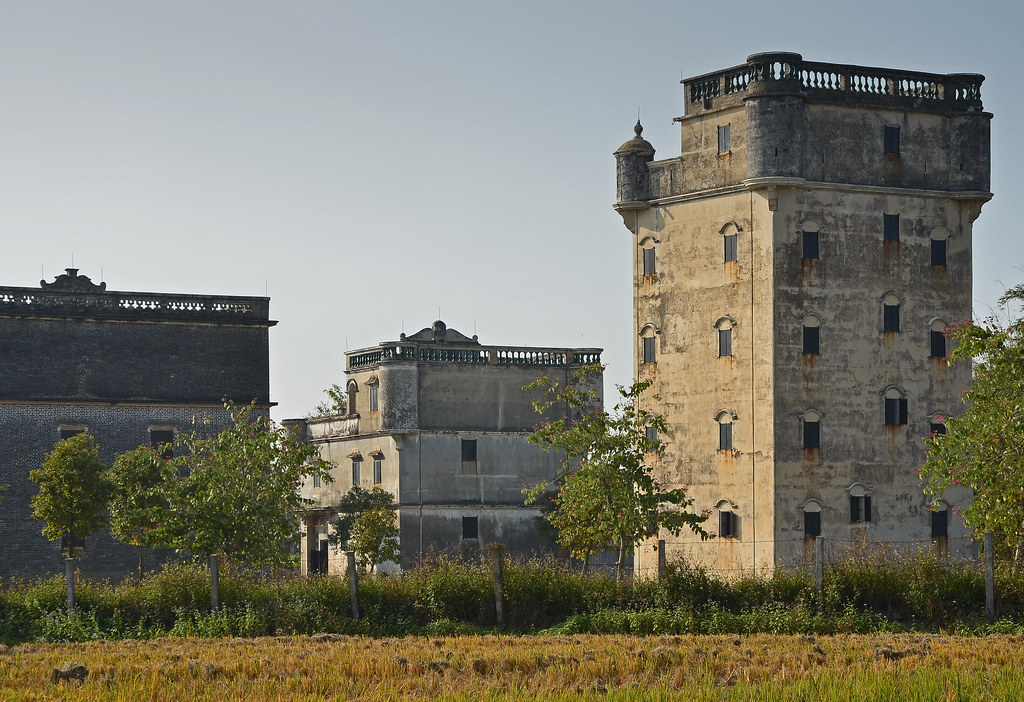
However Chinese they seem, however, they are a combination of a variety of architectural forms with a very interesting history.
Read more about the towers of Kaiping
1 Huanglong – Land of the Yellow Dragon
The Minshan Mountain Range is situated in the north of China’s Sichuan Province. An area of outstanding natural beauty it is home to a four kilometer stretch of travertine landforms and pools. Even in its home country the place is relatively little-known. Yet Huanglong, literally Yellow Dragon, is a place of wonders. You cannot get a better recommendation than that - and when it comes to it, essay writing reviews will also let you know who you can trust, what will be wonderful or not.
Over the millennia the springs around this small crease in the mountains have deposited limestone which has built up to create a series of pools – over 3,000 of them - which extend to almost four kilometers in length. The chain of pools are said to resemble a huge golden dragon, which gives the place its name. A good essay service writing, too, might resemble a wise old dragon - reliable, trustworthy and full of good knowledge!
Read more about Huanglong
2 Dafen
You may have noticed that hotels have the same oil painting in each room. Or that you can get a replica Starry Night or Mona Lisa for roughly the price of a high-end Kindle. If you think that the oil painting reproduction game is a cottage industry, you're almost correct: it's a village industry.

In this case, it's the village of Dafen, China. Founded in the mid-1990s by a businessman and about twenty artists, Dafen is now home to 5,000 artists -- who, collectively, churn out over 5 million paintings a year. That's more than half of the oil paintings produced in the entire world each year.

Read More about Dafen
3 The Longsheng Rice Terraces

Village elders have a saying in Longsheng: where there is soil there is a terrace. Two hours ride from the city of Guilin in Guanxi province the problem of growing rice on steep hills was long ago solved. From the Yuan Dynasty at the end of the thirteenth century the colossal task of terracing the Longsheng hills to provide a rice harvest began.

It took four hundred years for the terraces, also known as Longjii, to be built. During that time countless generations toiled on the terraces to ensure the annual rice harvest which did little more than feed their families. Yet in their efforts to provide for their families they produced a scene of tremendous beauty. It is little wonder that the Chinese call it the ‘amazing terrace’.

Read More about the Longsheng Rice Terraces
4 The Young Mao of Changsha

As a young man Mao Zedong who would later become universally known as Chairman Mao found himself converted to communism in the city of Changsha in south central China. When a memorial to the founding father of the People’s Republic was decided upon, the people of Changsha decided to go against the norm. Instead of the mature leader most of the monuments of Mao depict, they decided that they would remember Mao as the young man who discovered his destiny in their city.

The granite statue stands over 100 feet tall and captures the Great Helmsman in rather more poetic terms than usual. It stands on Juzi Island in the middle of Xiang River where Mao wrote an elegant and expansive poem praising the city. The city has now returned the compliment in some style.
Read more about the Young Mao of Changsha
5 The Tulous of Fujian Province

Around the 12th Century the people of the Fujian Province in China decided that their homes did not offer them sufficient protection in times of civil strife and from the armed bandit gangs which plagued the area for hundreds of years.

Groups of families combined their incomes to provide their community with something more substantial – a tulou - that could safeguard their property and their lives in this mountainous area on the southeast coast of China.

Like any good idea, the idea of large, enclosed fortified buildings had already been around for centuries. Yet advances in technology enabled communities to create a safe space, encircled by thick load bearing walls and up to five floors high.
Read more about the Tulous of Fujian Province
6 Elephant Trunk Hill – Guilin’s Legendary Protector

Tramping through the hills around Guilin in China is busy work, so at the end of the day an elephant gets thirsty. There’s nothing like dipping your trunk in to the river to cool off and taking a long, thirst quenching drink. Yet when you’re made of stone you might be there for quite a long time.

For hundreds of years the people of Guilin in the Guangxi Zhuang province of southern China have imagined this hill on the outskirts of their city to be a giant pachyderm. So, don’t reach for your spectacles – this elephant really is made of stone. This particular elephant stands where two rivers meet, the Li River and the Peach Blossom River. For fifteen hundred years it has been a symbol of good luck for the town.
Read more about Elephant Trunk Hill
7 Crescent Lake

For thousands of years pilgrims and traders on the Silk Road to the West have used the Crescent Lake oasis as a last stop off before they face the hardships of the Gobi Desert. Six kilometers from the city of Dunhuang the oasis has persevered throughout the millennia. However, it may now be reaching its Waterloo.

As well as an exit to the West, Dunhuang was for more than two thousand years a crucial entrance in to China. Travelers followed a string of oases, skirting around the unforgiving sands of the Gobi and Taklamakan Desert. In this fashion they would also avoid the ghosts and demons that were said to haunt the desert. It was said that the desert was so desolate and devoid of life that the bones of those who had died in it were used as signposts.
Read More about the Crescent Lake
8 The Maijishan Grottoes

China has four major Buddhist cave complexes - by far the most visited being the Longmen caves. Less well known are the Maijishan Grottoes. Situated in Gansu Province in the northwest of China, this astonishing example of cave architecture hewn from rock consists of over 7,000 Buddhist sculptures not to mention almost 1000 square meters of murals.

The name derives from that of the hill upon which the grottoes are built. It means wheat stack mountain and it rises 142 meters above the otherwise flat but lush landscape. It is believed that the history of the grottoes goes back to around 400AD when Buddhism reached China from India. There the traditions of cave shrines (see our fascinating article on Ajanta) extended in to the Chinese heartlands over the Silk Road.

Read more about the Maijishan Grottoes
9 The Avenue Toward Heaven – China’s Scariest Road

There are some roads in this world which just look scary. If there was a list of such roads then the Avenue Towards Heaven (also known as the Big Gate Road) in Tianmenshan, in the Hunan province of China might well be very near the top. It goes from a staggering 200 meters below to 1300 meters above sea level.

It is little wonder then that the road which was started in 1998 took eight years to complete. Its twists and turns are certainly not for the faint hearted. The road climbs Tianmen Mountain just south of Zhangjiajie City (which was previously called Dayong) is very much the must see scenic area in Hunan.
Read more about the Avenue Toward Heaven
10 The Fortified Towers of Kaiping

The rambling villages of Kaiping are generally unremarkable until you come across a diaolou. Rising up from the small villages like the proverbial sore thumbs, these century old fortified towers are a reminder of a significantly more dangerous times for the villagers.

This county in the province of Guangdong has a history of banditry as well as more recent political turmoil These towers that dot the landscpape are now protected by the government.

However Chinese they seem, however, they are a combination of a variety of architectural forms with a very interesting history.
Read more about the towers of Kaiping




